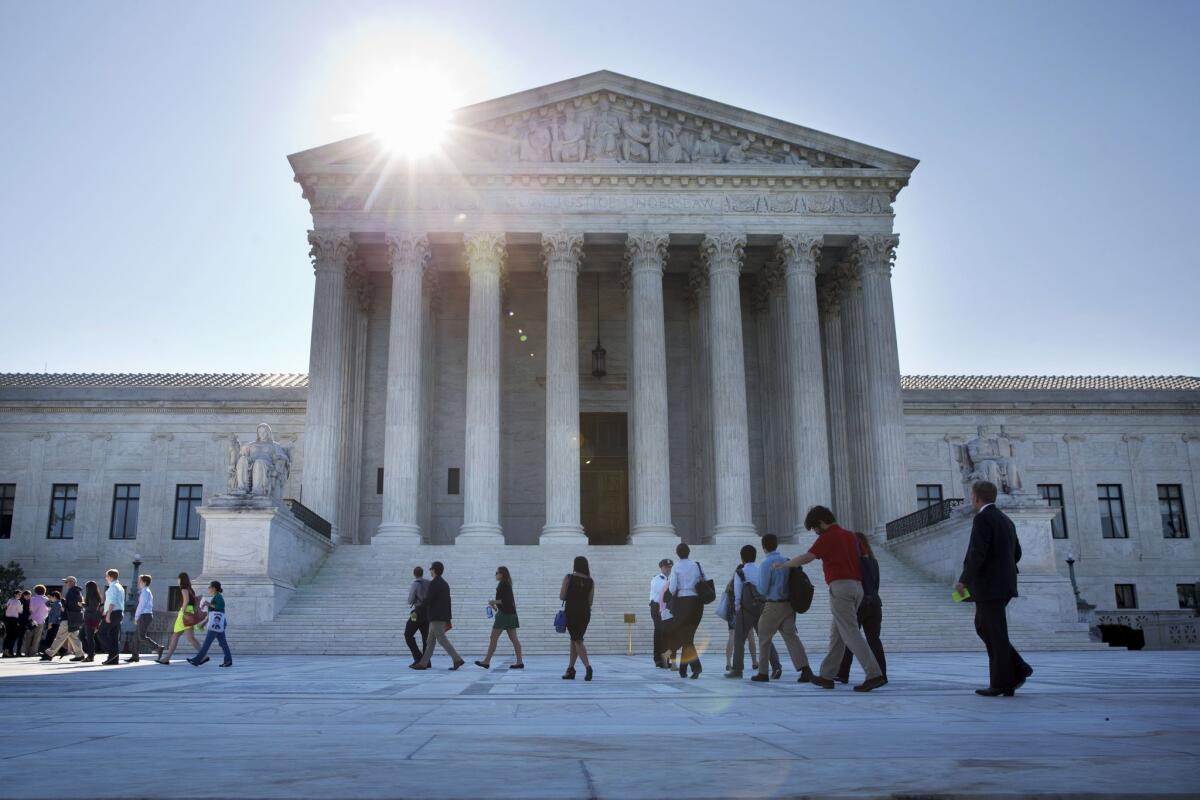Editorial: Supreme Court decision a victory for ‘we the people’

A line of people enter the Supreme Court in Washington on June 29, 2015. The court met for the final time on Monday until the fall to consider state efforts to reduce partisan influence in congressional redistricting, among other issues.
- Share via
Just a note to those California Democratic Party leaders who have been spending the last few months sketching new congressional districts in anticipation of Monday’s Supreme Court ruling in a case out of Arizona: Put down your pencils and put away your maps. The court rejected a challenge to Arizona’s redistricting law, so California’s very similar process — with an independent citizens commission instead of the state Legislature drawing districts — is also safe. District lines here are valid. Gerrymandering will not be making a comeback.
Legislatures are dominated by whichever party holds the majority, and in Arizona that would be the Republicans, in California the Democrats. With the release of new census numbers every 10 years, the parties used to redraw district lines with an eye toward maintaining their control — not just in the statehouse but also in their congressional delegations.
But Arizona voters cut their Legislature (and therefore the political parties) out of the loop in 2000 with a ballot initiative, and other states followed suit, including California in 2008 for state offices and 2010 for congressional offices. California’s exclusion of the parties is even more sweeping than Arizona’s.
The lawsuit that made its way to the Supreme Court was the Arizona Legislature’s attempt to deal itself back in. Fortunately, those Arizona Republican leaders failed to convince the court’s majority and, in so doing, dashed the hopes of their Democratic counterparts in California. Even voters who strongly support their political parties have a stake in ensuring that they control those parties, and not the other way around.
California’s redistricting reform was instigated by independents and members of various political parties but with a special push from Republicans, who seemed certain that a fairer process would result in their capturing more seats. Others hoped that an independent commission would result in more competitive races and the election of more moderate politicians from either of the major parties. If those were the only measures of the success of the California Citizens Redistricting Commission, the results have been disappointing. There has been some theater, such as the 2012 battle between redistricted Democratic Congressmen Howard Berman and Brad Sherman (Sherman prevailed), but no huge turnover.
But party turnover and political moderation were never — or ought never to have been — anything more than possible side effects. The point of redistricting reform is to ensure that elections more fully express the will of voters, not the parties. It is a work in progress that will continue to be refined as long as party leaders seek power and voters push back.
Follow the Opinion section on Twitter @latimesopinion and Facebook
More to Read
A cure for the common opinion
Get thought-provoking perspectives with our weekly newsletter.
You may occasionally receive promotional content from the Los Angeles Times.









